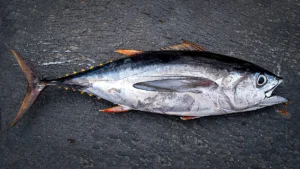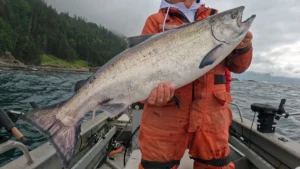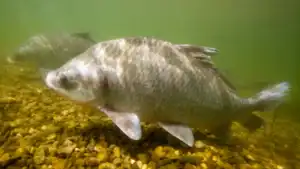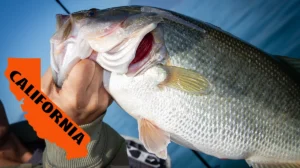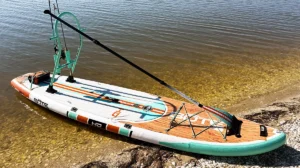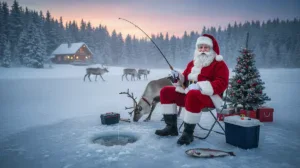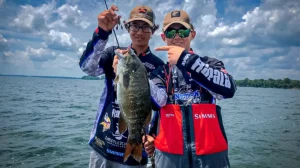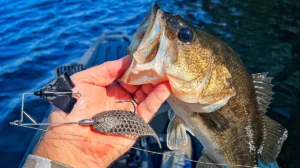White bass are a highly sought-after fish in the spring when they run up into rivers and creeks to spawn and in the summer as they school shad on the surface. They are also commonly confused with hybrid striped bass and striped bass. If this is news to you, then you are about to learn a lot about white bass.
White bass history
White bass (Morone chrysops) belong to the Moronidae family, which includes yellow bass, striped bass and white perch. The Moronidae family are commonly called temperate bass or true bass and have no connection to the Centrarchidae family which includes spotted bass, largemouth bass and smallmouth bass.
The species was first described by Constantine Samuel Rafinesque, who contributed work in zoology, botany, anthropology and linguistics. Rafinesque first wrote about white bass and other species in “Fishes of the Ohio River.” The species name chrysops is the greek term for gold or golden eye, which refers to the gold-like eye of the white bass.
Alternative names
The white bass has several common names, including sand bass, sandy, white perch barfish, streaker, white rock bass and silver bass.
White bass identification
Identifying white bass can be confusing as they are often misidentified with other North American temperate bass, the striped bass, white perch and yellow bass or their hybrids. Although they all belong to the same family Moronidae, the white bass does have critical characteristics that will help you identify it apart from the others.
White bass have a black to blue or gray upper back, with silver to white sides and underbelly. There can be between 4 to 7 dark horizontal stripes located on the upper side of the body. The higher stripes will be well defined but broken or offset, one single continuous stripe will extend unbroken to the caudal fin at the lateral line, and lower stripes will be ill defined and highly broken. Side striping is often used to help in distinguishing between true bass. The striped bass will have multiple well defined stripes that extend from the head to the caudal fin, the white perch has no striping and the yellow bass will have defined stripes extending to the tail above the midline and broken below the midline. Stripe visibility can be dependent on the water color and clarity of the fishery and should only be used to begin the identification process.
Another key identifier for the white bass is the dorsal fins. The first dorsal fin will have nine spines. The connection between the first and second dorsal fin will be notched with no membrane connection to the second dorsal fin. The second dorsal fin will begin with one rigid spine and continue with 12 to 15 soft fin rays. The yellow bass and white perch will have their first and second dorsal fins connected with a soft membrane.
The white bass anal fin will have three rigid spines where the second spine is notably shorter than the third spine, as opposed to the yellow bass, where the second anal fin spine is about equal length with its third spine. They have one single sharp point on each of their gill covers. You can count between 51 and 60 lateral line scales, 15 and 17 pectoral soft fin rays, 5 pelvic soft fin rays and 11 to 13 soft fin rays in the anal fin. The tail, dorsal and anal fins have a cloudy gray coloration and the pectoral and pelvic fins have a yellow to white coloration.
The white bass has only one tooth patch near the midline towards the rear of the tongue, whereas a yellow bass does not have a tooth patch and the striped/hybrid striped bass both have two tooth patches. Many state agencies use this as a distinguishing characteristic between species in their harvest regulation guide books.
Location
White bass native distribution includes much of the eastern United States and south central Canada. Their original eastern boundary was the Appalachian mountains. To the north they could be found throughout the Great Lakes and into Canada from Quebec to Manitoba. To the sound they spread throughout the Ohio and Mississippi river basins into the Red river basins to the west.
Today, the species can be found throughout the continental U.S. and Canada, several experimental stocking programs have been successful in the expansion of the white bass to create sustainable populations well outside of their native ranges. They have been introduced into Mexico and Turkey but not widely throughout Europe.
Their distribution as a hybrid with striped bass has recently increased in popularity and will continue to create put and take fisheries throughout the US.
To see the native and current distribution of white bass we created this interactive map.
Spawning
In the early spring, white bass will swim up-current and group together to wait for the right conditions to spawn. While they are grouped up waiting, this can provide an excellent opportunity for anglers since there is such a dense population in a small area. The spawn can be determined by three critical factors, including water temperature, light intensity and current. When water temperatures reach 60℉ to 68℉, the spawning run begins with the males moving up tributaries first and the females following in 2 weeks to a month later. Spawning can continue for 5 to 10 days and will end as water temperatures reach into the mid 70s.
White bass spawn in areas of current with a depth shallower than 10 feet and with rock or vegetation nearby. Sites are used historically with the schools returning each year. Spawning can occur throughout the day or at night. The spawn will begin with several males pairing off with females and bumping into her abdomen releasing eggs. When the female proceeds to drop her eggs and the male fertilizes them, the eggs are adhesive, meaning they will attach to structures in the water like rocks, brush, substrate, etc. Female white bass can produce 25 thousand to 1 million eggs each season but rarely at one time. Instead, eggs develop throughout the spawn and approximately half are viable enough to lay. The smaller eggs are instead reabsorbed into the body after spawning season. Unpredictable weather conditions can lead to females not producing eggs for the spawn or abandoning the spawning season abruptly.
Once eggs are dispersed, they provide no parental care. During the incubation process, the eggs need oxygen to remain alive; the current or riffles act as life support in providing more oxygen with faster-moving water. After the female releases the eggs and the male fertilizes them, the adult white bass return to open waters to feed after spawning.
Photo by Megan B. via iNaturalist.org
White bass size and lifespan
The fry usually hatches within two to three days and grow rapidly. The diet of the fry initially consists of zooplankton. As they increase beyond 1/2 inch in length they rapidly change to insects and crustaceans and again quickly to larval fish. As they increase in size, the white bass fry migrate downstream and into reservoirs to grow out.
By 4 inches in length, they exclusively eat fish forage and at 10 inches predominantly consume shad species. Throughout their entire lives, white bass travel in schools feeding by corralling forage into tight balls at the surface.
Growth rates can be extremely rapid with fish reaching 6 inches in several months and 8 to 10 inches within the first year. Following first year growth, they typically grow at a rate of one inch per year. Males reach maturity within their first year at around 9 inches. Females can be slightly delayed reaching maturity at year two and 10 inches in length.
White bass have an average lifespan of about 4 to 5 years. These fish are known to be hardy and adapt to their environment. The oldest known specimen lived to 9 years.
Diet
White bass feed in large schools to help corral prey fish. To corral bait fish, white bass start by surrounding a school of fish and forcing them towards a shallow ledge or point. As the bait fish get closer to shallow water, they will force them to the water’s surface. The forage fish will jump out of the water to avoid capture. Pay close attention on your next trip and you might observe this happening.
White bass are primarily carnivores in the early life stages and they feed mainly on zooplankton, insects and small crustaceans such as crawfish. This hones the hunting skills that it is exceptionally known for. As white bass grow, they target bait fish such as minnows and small shad.
Once the white bass reaches adulthood, they will predominantly hunt shad and larger forage fish. The larger white bass will chase schools of fish until they become exhausted and move to another area to forage.
White bass are generally considered opportunistic feeders. They will feed on anything that will fit in their mouth. Small fish of every species can become dinner in lakes with sizeable white bass populations. In areas where white bass are introduced, they can change ecosystems by eating crawfish, minnows, darters and young game fish, limiting the viability of stocking programs. These aggressive sight-feeding fish usually feed early in the morning or later into the evening.
Photo by jkmaxfield via iNaturalist.org
Habitat
Adult white bass favor areas in rivers with deep pools with slow-moving water and prefer the open water of lakes where they can see for greater distances. White bass can quickly adapt to man-made reservoirs that have deep pools, power generation or hot water discharge. Their reproduction success is dependent on their ability to get to a shallow area with flowing water to oxygenate the eggs. Once established, they will become abundant in reservoirs.
During the day, white bass will move to deeper portions of the water column that have a gravely or sandy bottom. In rivers, they prefer the deeper pools with following water due to the oxygenated water. Activity peaks in the early morning or later in the evening. This is when they will school up and begin to look for schools of baitfish. Once they have identified a school, they will begin working the baitfish to an area where they can be corralled. The trapped forage will be picked off by the ferocious school of white bass until the school of baitfish is exhausted.
Threats
Today, through stocking programs, expanded range and harvest regulations, white bass are relatively stable and experience only fishery-specific population issues. Significant flooding events, severe drought, loss of river connectivity, siltation and increase in reservoir fertility can cause significant shifts in forage availability, egg survival and migration that limit the reproductive success of white bass. These events over extended periods can lead to less spawning and species abundance.
Photo by Fletcher Stone via iNatularist.org
White bass facts you need to know
- The white bass is Oklahoma’s state fish.
- The world-certified record by IGFA for white bass was caught by anglers Ronald Sprouse and Corey Crochet, weighing in at 6 pounds, 13 ounces. Ronald Sprouse caught his on Lake Orange in Orange, Virginia and Corey Crochet caught his on Amite River in Louisiana.
- Two hybrid varieties of white/striped bass currently occur from commercial hatcheries. Sunshine bass as male striped bass and female white bass crosses and Palmetto bass are male white bass and female striped bass.
About the author
Steven Bardin obtained his bachelor’s degree in Freshwater Biology from Tarleton State University in 2009 and his master’s degree in Fisheries Science from Texas A&M in 2013. While at Tarleton, Bardin worked for Harrell Arms at Arms Fish Farm and Bait Company. In 2011 he founded Texas Pro Lake Management. He strives every day to take a scientific approach to helping his clients maximize the production of their fisheries.
Outside of TPLM Bardin has written for Wired2fish, taught as an adjunct professor for Tarleton State University, and served as an instructor and camp coordinator for Bass Brigade youth leadership camp. In 2021, Bardin helped Major League Fishing found their Fisheries Management Division and leads their conservation efforts today.
Bardin is a member of Texas Aquatic Plant Management Society, Texas Chapter of American Fisheries Society, Southern Division of American Fisheries Society, Society of Lake Management Professionals, Texas Freshwater Fishing Hall of Fame Board, Texas Brigades Board, Texas Freshwater Fisheries Advisory Committee and the Major League Fishing Anglers Association Board.
You can follow him on Facebook and Instagram.






